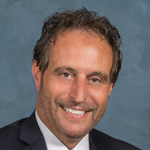
It should come as no surprise that according to U.S. News & World Report, the average tuition and fees required to attend college continues to climb.
For private colleges, that average amount is $38,185 per year. For out-of-state students attending a public college or university, the amount is $22,698 and roughly half that amount for in-state students at $10,338 per year.
Recommended For You
By the way, these amounts do not include room and board.
For a vast majority of college students, and their parents, the only way to attend public or private college is to take on student loan debt. According to the Federal Reserve, there are 45 million borrowers who owe more than $1.7 trillion collectively in student loans.
Student loans have progressed to become the second-highest consumer debt category – behind mortgage debt.
According to the 2021 College Savings & Student Debt Study from Fidelity Investments, only 19% of those surveyed stated they had a dedicated college savings account to assist with paying for higher education costs.
"A growing number of parents have been turning to loans in their own name to help fill the gap, leaving Gen X and boomers heavily burdened by debt as they approach retirement – and millennials may want to think twice before adding the student debt of their children onto their own student debt burden," the study stated.
The study added, "After graduation, nearly two-thirds (64%) of recent graduates and their parents say the final balance of their loans was higher than expected."
Fidelity's study found that four in 10 high school students rated the cost of college as the most important factor in choosing when and how to pursue higher education.
"Nearly half (49%) of high school parents expect grants and scholarships to play a role in financing education, but only one-third of recent graduates say they benefitted from these programs," the study reported.
The study also found that 44% of high school parents expected financial aid to help pay for school, while 35% expected student loans to cover the costs.
For many who were simply eyeing a post-high school education, private colleges and universities were out of the question due to their higher costs in nearly every category from tuition to room and board.
What if there was a new way to think about helping students attend college without taking on an oppressive amount of debt? And what if credit unions could tap into a program that serves as that much-needed financial help and, at the same time, serves as a member-retention tool?
Earlier this year during the CrossState Credit Union Association's annual meeting in Atlantic City, N.J., a new partnership was formed to do exactly those things: Help students cover the cost of a private school education and acquire more members.
SAGE Scholars, Inc., headquartered in Philadelphia, is the country's oldest and largest private college preparation and funding organization. SAGE Scholars has a goal to "bridge the gap between students who want an affordable private college education with colleges that will guarantee tuition discounts for member families – all at no cost to the student, family or college."
According to SAGE Scholars CEO Michael Hall, his company has become a preferred vendor for CrossState and he is currently rolling out his organization's tuition rewards program to member credit unions.
The way Hall explained it, the SAGE Scholars Tuition Rewards program is similar to frequent flyer miles. Each point is equal to $1 in discounts and represents the minimum scholarship that a sponsored student will receive if they attend school at a participating private college.
Hall said he believes this program is an excellent perk for being a credit union member.
"So for instance, say somebody has a money market account and the money market account is $50,000 for every year that member keeps the money market account active. We will match the Dec. 31 balance with 5% tuition reward points. So you would get 2,500 tuition reward points for every year. You keep that money market account at that credit union. So after 10 years you can build up 25,000 tuition reward points that can be redeemed at any of our 440 schools," Hall said.
Hall said he believes adding products or perks like this can bring extra value to credit unions looking to stand out to members facing the daunting financial strain of sending their kids or themselves to college.
 Daniel Sulpizio
Daniel Sulpizio Daniel Sulpizio, EVP and COO at the Deptford, N.J.-based First Harvest Credit Union ($496 million in assets, 50,622 members) similarly believes in Hall's vision.
Before coming to First Harvest nearly four years ago from his time at a bank, he instituted the SAFE Scholars Tuition Program as a way to acquire new depositors with great success.
"I used it at a different financial institution as a method of acquiring new depositors, because if you're getting rewards that you could use for college for children, you're more likely to look at that as a benefit and bank with that financial institution," Sulpizio said. "So my, my plan was to do the same thing for the credit union."
In fact, First Harvest is the first and only credit union in New Jersey to offer the rewards program.
At the time he initially launched the program at First Harvest, COVID-19 hit and it had to be put on hold. But now, he said, the credit union is rolling it out again this fall as kids are heading back to school.
"And as you know, credit unions being [not-for-profit], one of our biggest platforms of course is education. I think it's very important that we support education," Sulpizio said. "We have a lot of select employer groups that are school districts and we support a lot of teachers. So this was a perfect opportunity for me to bring this program to First Harvest."
Sulpizio said the feature, which is at no cost to members, has indeed become a member retention and acquisition tool. He also said it couldn't have come at a better time.
"Obviously, if you think about the cost of college today, I mean the cost of college just keeps on growing and growing and growing," he said.
He continued, "The way that I look at this product is as a pyramid – you've got the top kids who are getting academic and athletic scholarships. And then you've got the base of that, the individuals who are getting all of the financial aid and scholarships. And you have this group in the middle of kids who really want to go to these top schools, but their parents can't afford it. It's a little bit out of reach and this really allows our member base the opportunity for these kids to use rewards points, to get them to that next level."
Hall realized at the outset that the SAFE Scholar Tuition Rewards program had the potential to attract members and also become an employee benefit. Sulpizio agreed and has taken it a step further.
"One of the things that we've talked about expanding on the product is, how can we get our employees more involved and help them as part of our family become more involved in their 401(k)s and planning for their future? We're looking at that right now, that maybe we can give our employees who participate in the 401(k) program the opportunity to earn rewards points if they participate, because we really do care about our employees," Sulpizio said.
Sulpizio added that he wants his credit union's leaders to show members how much they understand the financial strain and stress of school and life.
"We're here to help them through every walk of life and we want to help their children. If you think about our tagline, 'First Harvest is a better place to grow,' that really is to grow your future, to grow your children, to grow your family. And that's really what we want it to be," he said.
© Touchpoint Markets, All Rights Reserved. Request academic re-use from www.copyright.com. All other uses, submit a request to [email protected]. For more inforrmation visit Asset & Logo Licensing.







